Last chance: The 14th Architizer A+Awards celebrates architecture's new era of craft. Apply for publication online and in print by submitting your projects before the Final Entry Deadline on January 30th!
In the rush of modern life, as we scuttle and shuffle our way through the world, it’s easy to overlook the spaces between — the corridors, staircases and passageways that quietly influence our journey through a building. Yet, it is these transitional spaces that subtly guide us. They shape our perceptions and even alter our emotions. Architects, with an almost imperceptible sleight of hand, use these spaces to manage and manipulate our experience of a building. Whether gently nudging us toward moments of intimacy or expanding our sense of grandeur, these pathways can be so much more than simply a route from A to B.
As architecture’s function becomes ever more nuanced, the psychology of design is vital. Moving through space is no longer a passive experience but a considered conversation between the built environment and the human mind — a dialogue that shapes how we experience the world around us.
Spatial Compression and Expansion
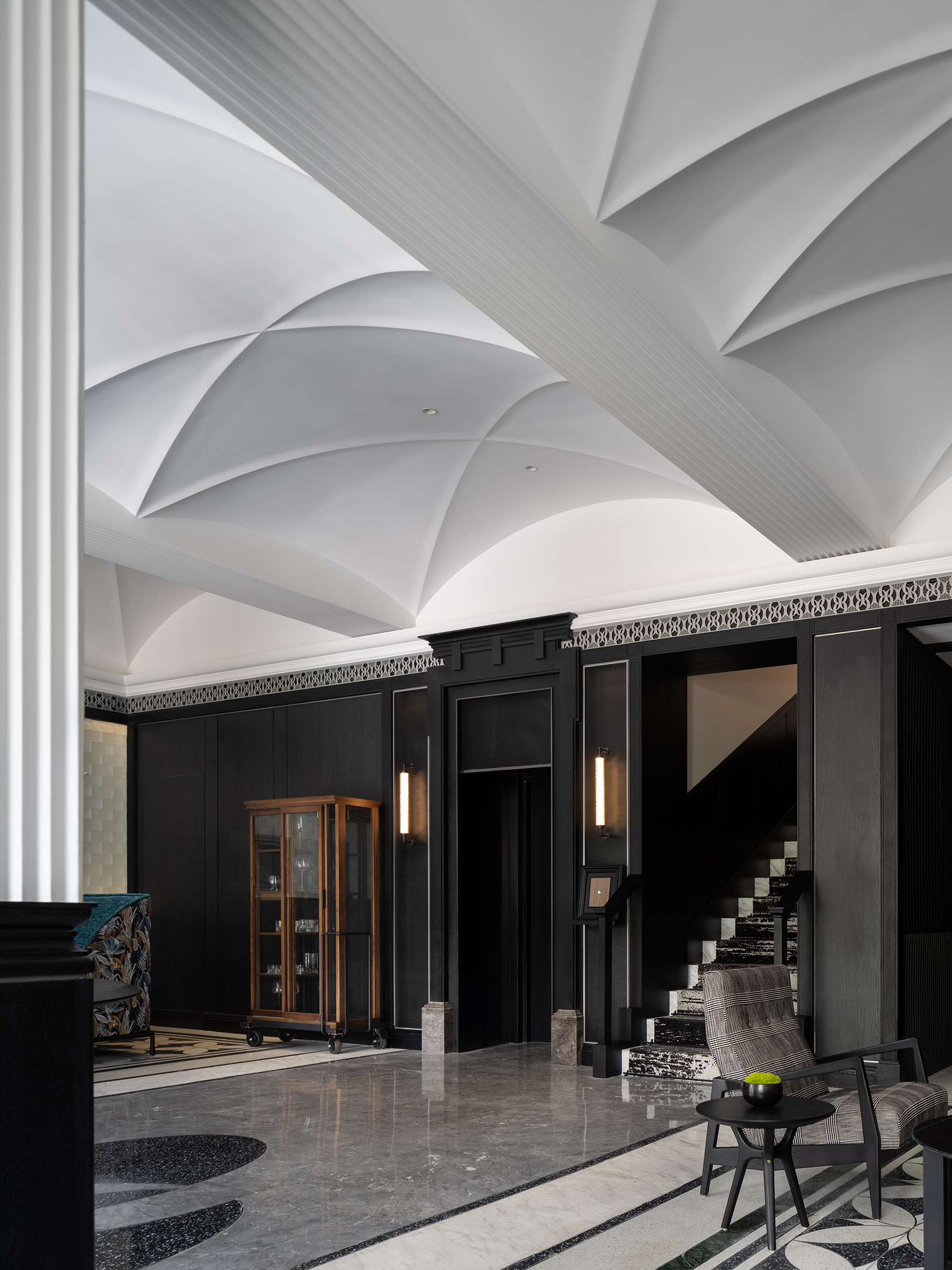
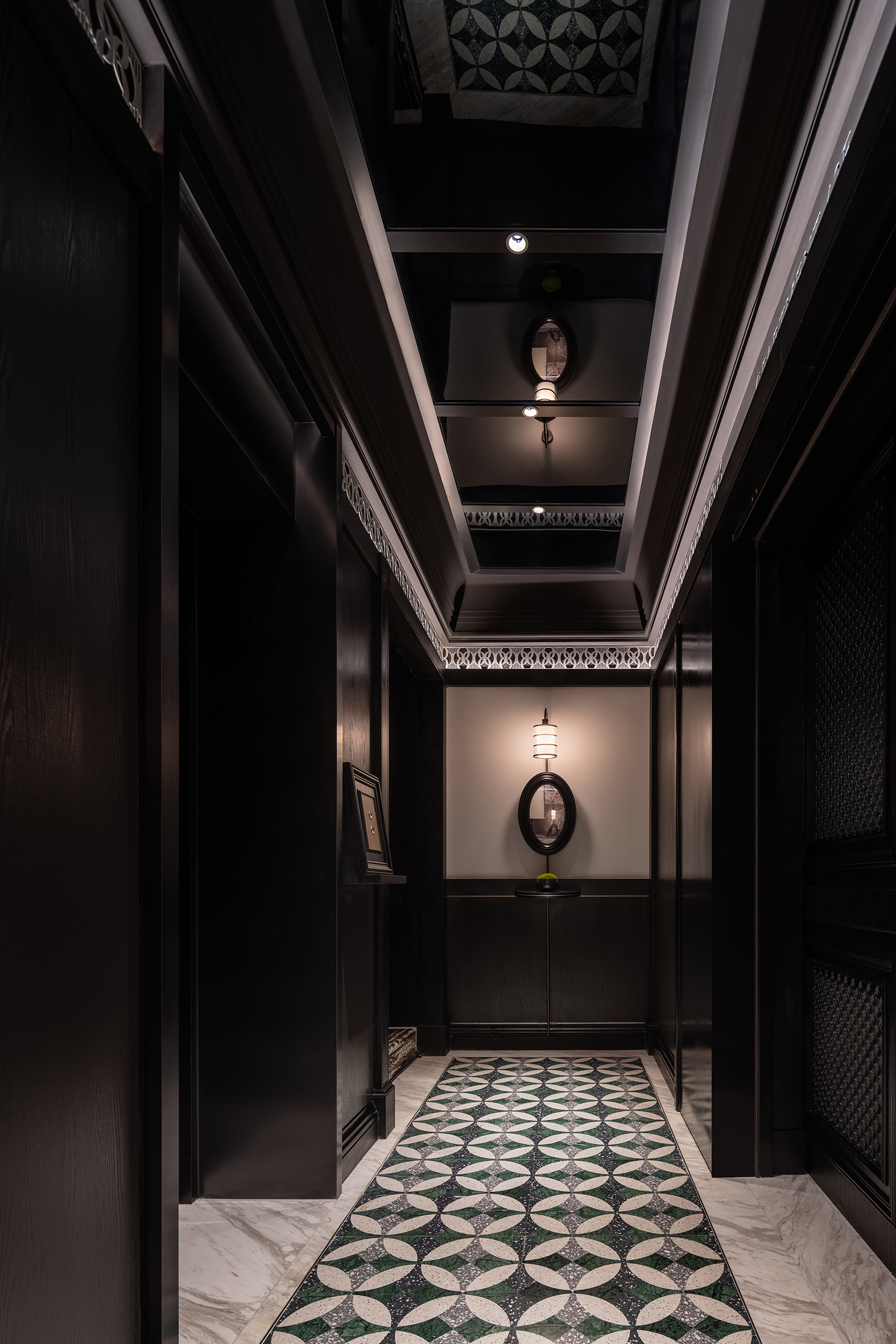
Ôpartment by DESIGN ONBOARD STUDIO, Shanghai, China | Photos by WU SPACE -VincentWu
Few things influence our perception of space more than the feelings of compression and expansion. Step into a narrow, confined corridor, and you immediately sense the weight of the space pressing in on you, urging you forward. Then, compare that to stepping into a room with soaring ceilings and abundant light — suddenly, there’s a palpable sense of release. Architects use these spatial tricks, compressing and expanding areas, to bring forth emotions we often don’t even consciously register.
Through careful manipulation of ceiling heights, corridor widths and sight lines, architects can create a rhythm of spatial experiences. Compression fosters intimacy or focus, while expansion invites openness and reflection. In these cases, space isn’t the only malleable aspect of the architectural experience — time can also be warped. Confined spaces push us to move faster, while expansive ones encourage us to slow down, pause, and even linger. By striking a balance between compression and expansion, how we physically and mentally engage with a building can be adjusted. It’s this mixing of experiences that injects dynamic energy into transitional spaces and can make a journey as significant as the destination.
Blurring Boundaries
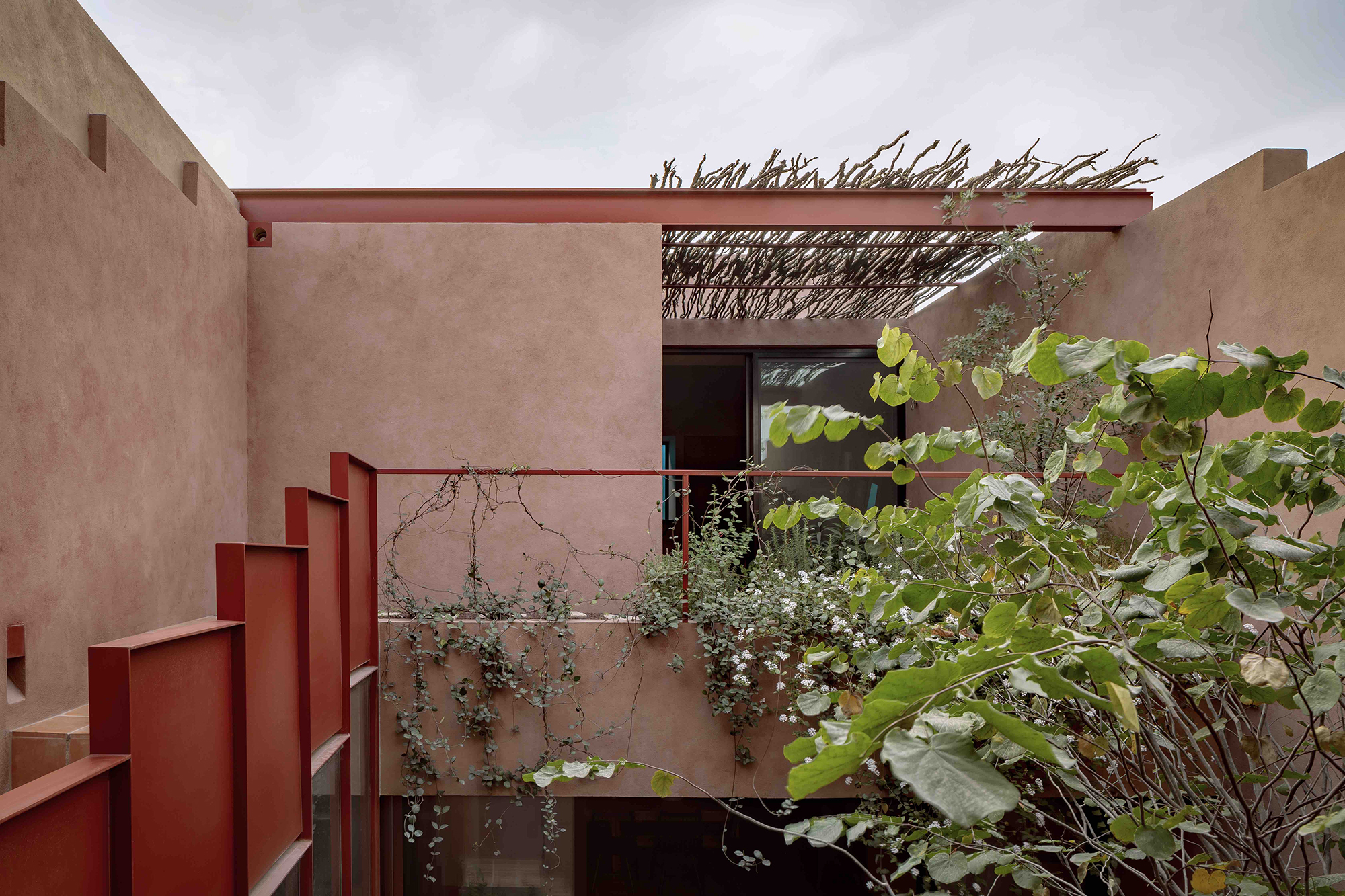
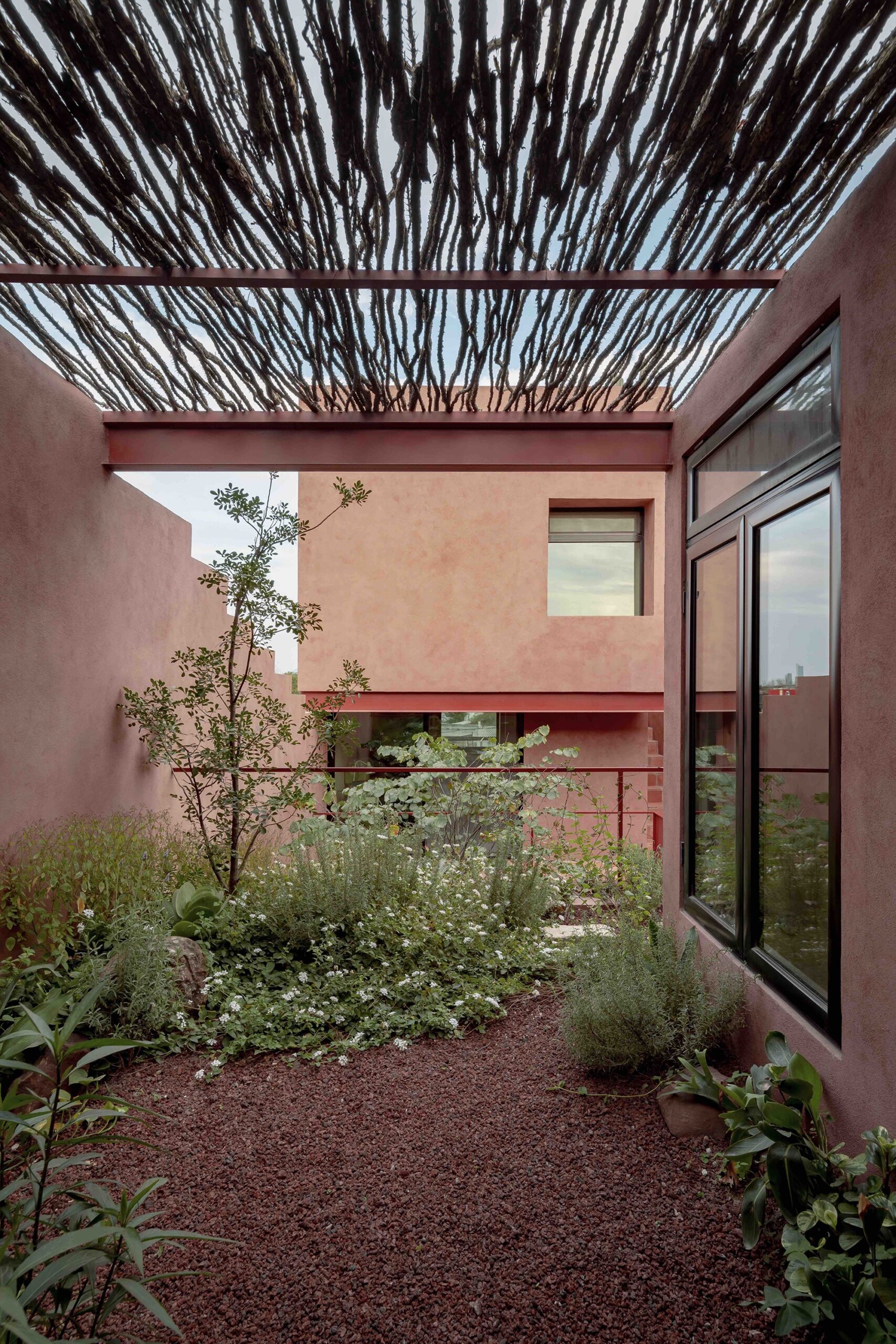
Ederlezi by Práctica Arquitectura, San Pedro Garza García, Mexico | Photos by Apertura Arquitectonica
Transitional spaces no longer need walls to define them. As we increasingly seek nature wherever we can, architects are integrating biophilic design into the pathways and corridors within and around their buildings. Courtyards, gardens, and even living walls have become a common part of the transitional spaces as a way to dissolve the boundaries between indoors and outdoors.
By using materials that reflect nature — stone, timber and evolving living walls — architects can create buildings that feel like they’re breathing with their surroundings. Large panes of glass, open-air corridors and clever sight lines that guide our view toward green landscapes reconnect us with nature. And it isn’t just a design trend. This kind of design taps into something deeply primal. Our need to connect with nature is instinctive, and these blurred boundaries offer users of a space a moment of calm; a way to reduce stress, boost cognitive function and enhance their overall well-being.
Corridors as a Canvas for Expression
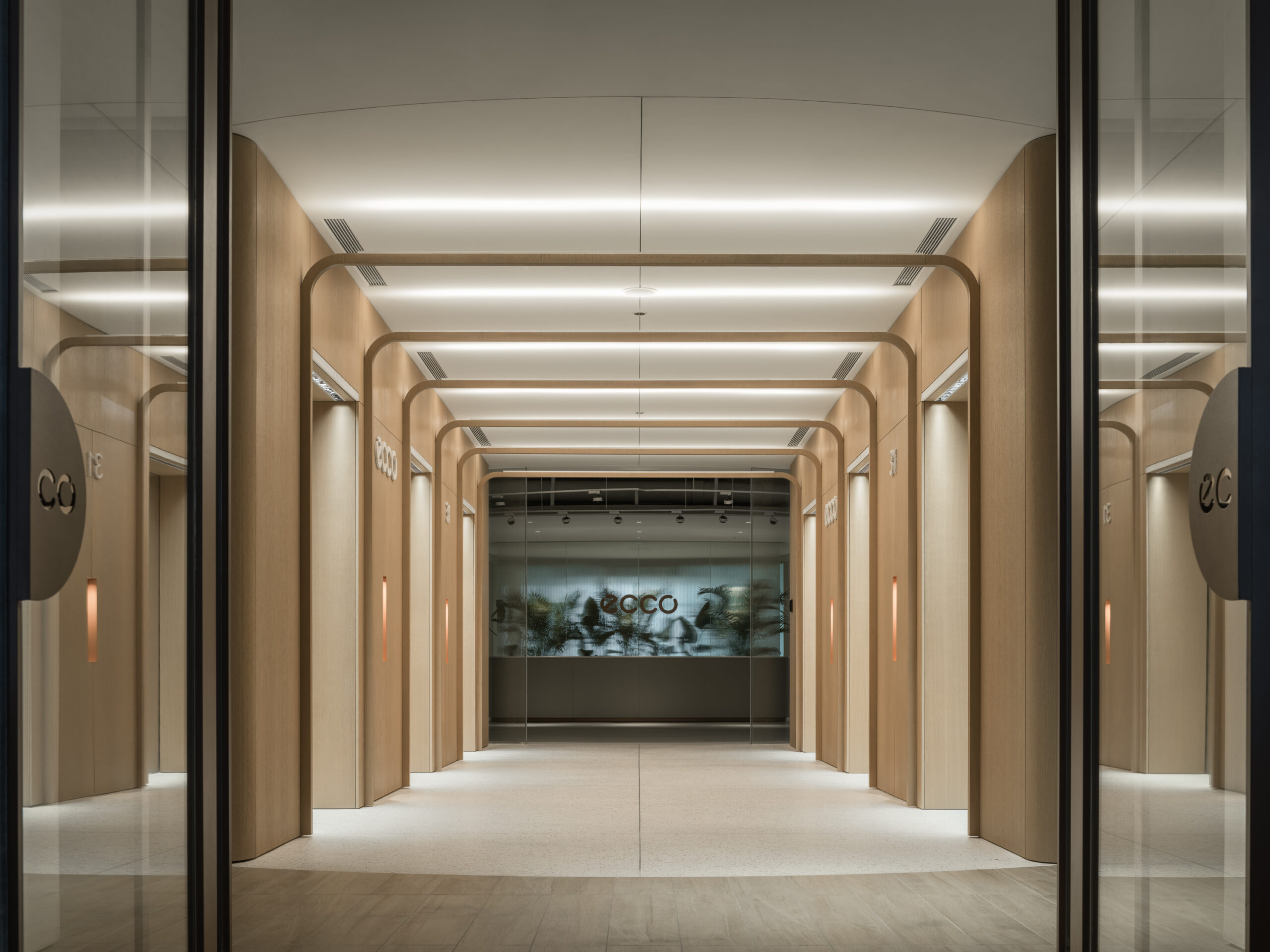

ECCO China Headquarters by HONG Designworks, Shanghai, China | Photos by Tan Xiao
Far from being passive zones, corridors are very often used as canvases for creativity and artistic expression. In recent years, corridors had started to become underwhelming spaces. However, it would appear that change is afoot. These spaces are increasingly being used to express a building’s ethos. Through art, lighting, and materiality, more and more corridors are inviting us to pause, reflect and engage as we move through them.
Corridors with rotating art installations or that are designed with tactile materials turn what might have been a forgettable space into one that sparks curiosity or contemplation. They transform the journey, creating an experience that speaks to us in an unexpected way while also giving architects and designers additional opportunities to explore and play. Beyond aesthetics, corridors are also becoming social spaces, particularly in offices, museums, and educational buildings. By incorporating seating and thoughtful design, corridors have the potential to become dynamic communal spaces that are just as impactful as the rooms they connect.
Vertical Transitions
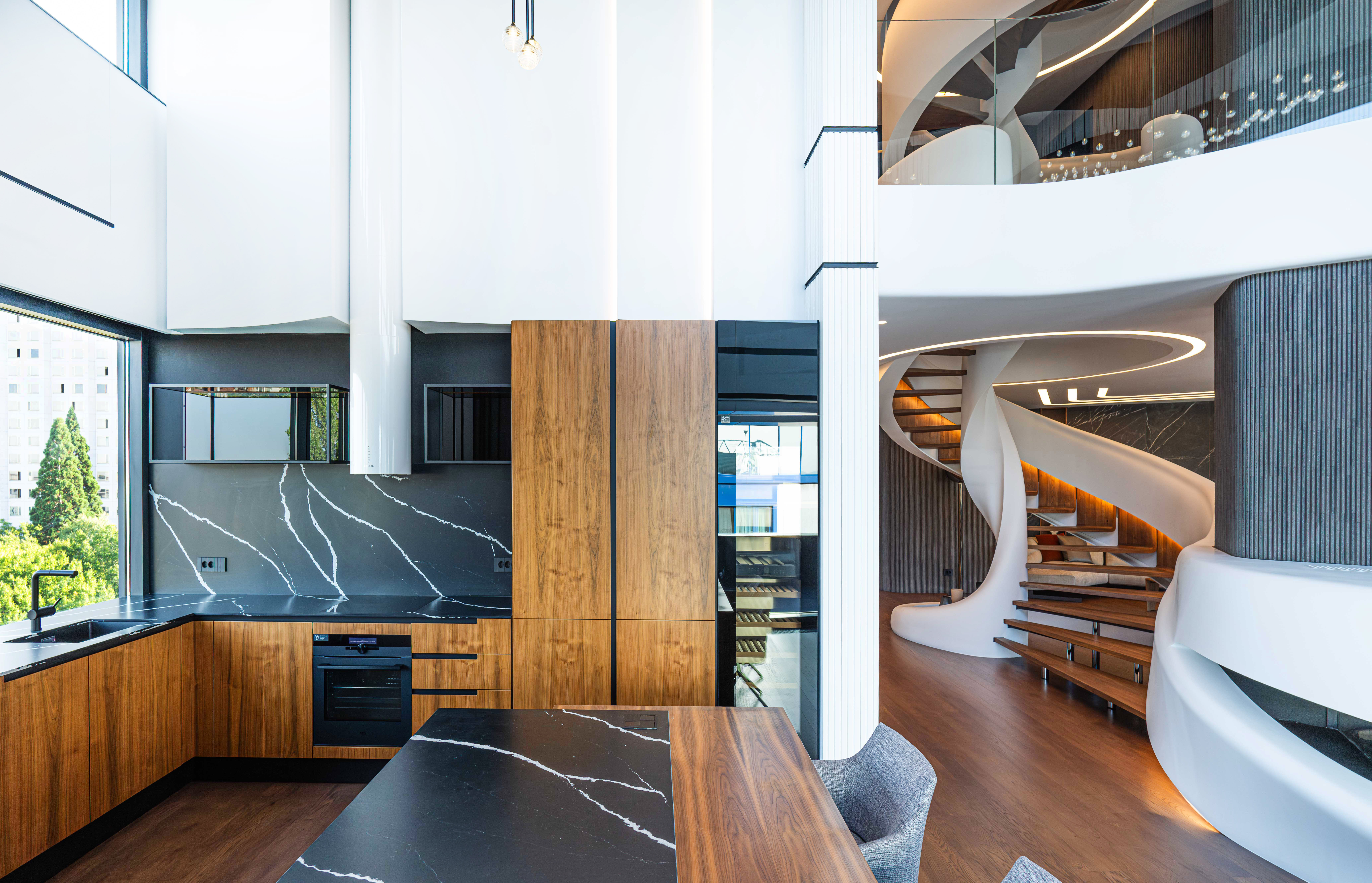
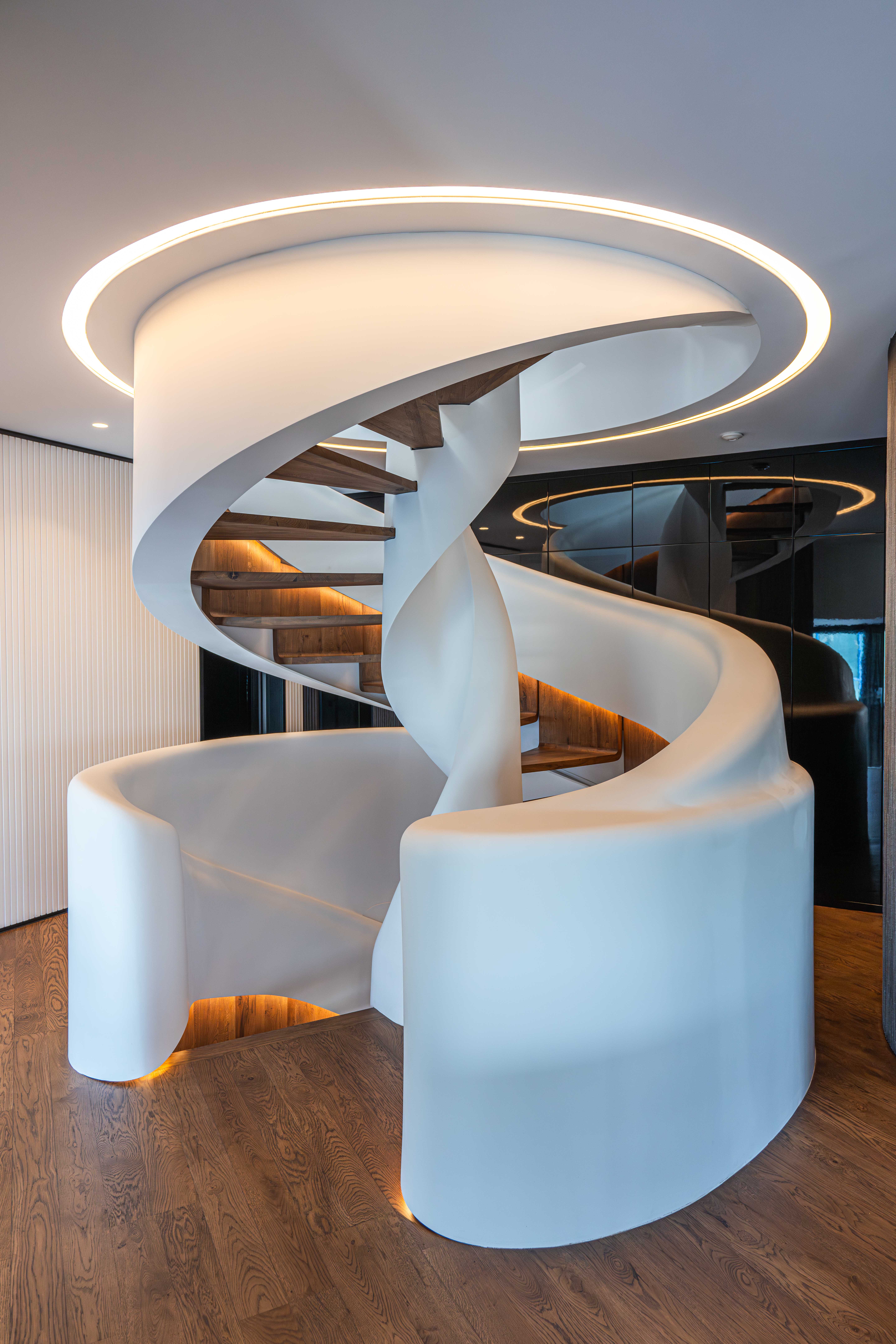
Penthouse B73 by CAST Studio, Sofia, Bulgaria | Photos by Cast Studio
Staircases are often seen as purely functional, but they have the potential to be so much more than that. They can be sculptural statements, bringing vertical continuity to a building while connecting disparate spaces in a thoughtful or exciting way. In high-density urban environments, where horizontal space is limited, and every square meter is precious, staircases can offer opportunities for a type of connectivity that encourages exploration by drawing the eye and being central to the design.
By playing with form—whether through spirals, floating treads, or bold geometries—architects can use staircases to create moments of joy within the everyday flow of urban life. As vertical transitions, they are part of the building’s story and, as such, can shape how we engage with it. Tread heights, staircase width, window position, and even size and regularity of landings can each impact the pace of our journey through as well as provide an opportunity for discovery, be it of views outside or within the building.
The Power of Thresholds

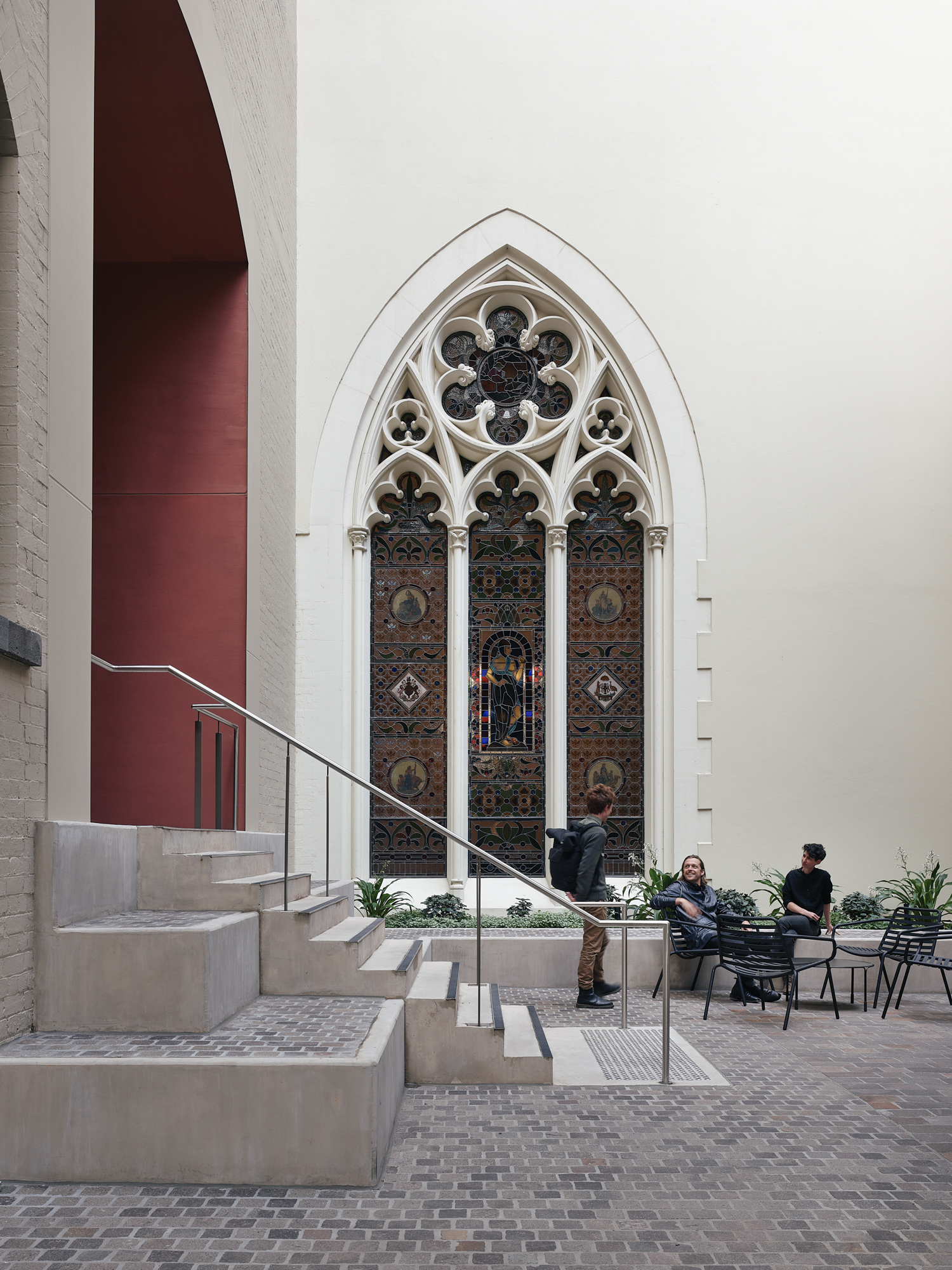
Queen & Collins by Kerstin Thompson Architects, Melbourne, Australia | Photos by Derek Swalwell
Thresholds, those quiet, subtle moments between rooms or zones, carry a significance far beyond their appearance. They are the point at which spaces shift, atmospheres change, and we, as users, are asked to pause and recalibrate. Whether it’s a shift in light, texture, or scale, thresholds create a sense of anticipation. They are the held breath before stepping into something new.
Architects have long understood the psychological power of thresholds. Crossing one isn’t just a change of space. It is a moment to shape our expectations of what’s to come next. A threshold can alter our mood entirely—heightening awareness, slowing our pace, or even instilling a sense of awe. These moments set the tone for the spaces we are about to enter, providing a subconscious narrative that guides us from one room to the next.
In contemporary design, thresholds are used to create contrast and drama without the need for walls. A shift in flooring or a sudden change in ceiling height can mark these transitions, giving a building depth and complexity to even the simplest spaces. These moments, though easily overlooked, are pivotal in shaping how we engage with the architecture around us.
Last chance: The 14th Architizer A+Awards celebrates architecture's new era of craft. Apply for publication online and in print by submitting your projects before the Final Entry Deadline on January 30th!



